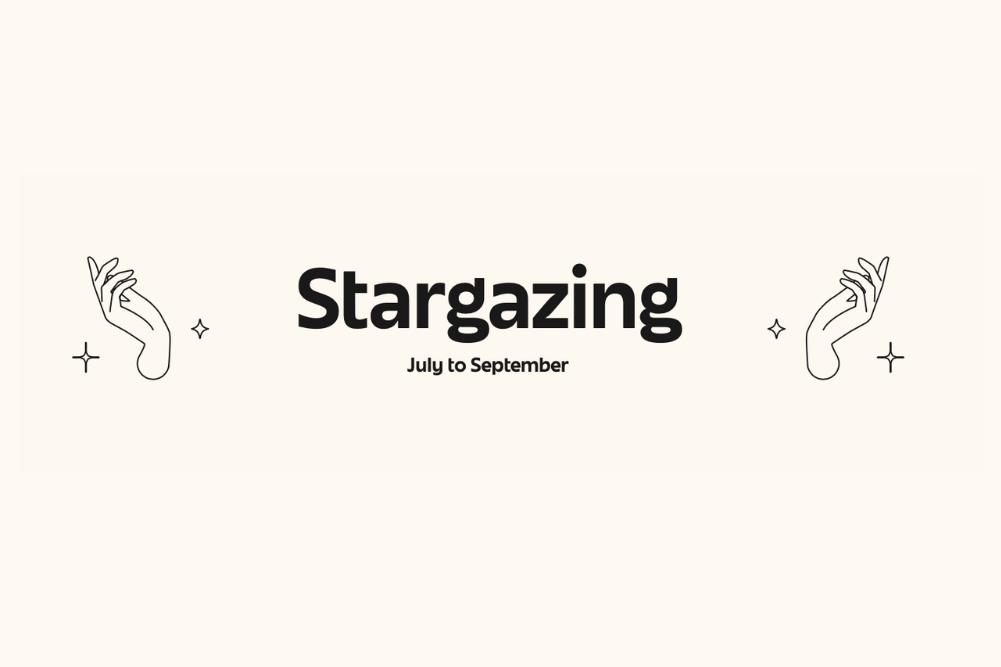Learn the ancient art of deciphering your astrological aspects
Learn a simple yet ancient way to identify astrological aspects in your chart and discover your planetary obstructions and cosmic supports.
An aspect is a spatial relationship between two planets that will join them together. When two planets are joined by an aspect, they influence each other and alter the way they are each interpreted. The nature of the effect depends upon the planets involved and the kind of aspect that is joining them together.
Aspects are one of the core techniques in astrology and have been used by astrologers for more than 2000 years. Aspects have been conceptualised in different ways throughout history.
Some astrologers imagined an aspect as a beam of light radiating out from the planets, striking the other planets and physically joining them together. Other astrologers thought of aspects in a metaphorical way, as a kind of conversation between the planets. In this model, the planets form connections by looking at each other and communicating with each other, as though they were people.
In traditional astrology, the planets Jupiter and Venus are “benefic” or helpful planets… The planets Mars and Saturn are “malefic” or troublesome planets.
Regardless of how you imagine aspects work, they are a crucial part of any astrologer’s toolbox. Working with aspects will add detail and subtlety to your astrology and improve your accuracy with chart interpretation.
New students of astrology often find aspects intimidating, because there is a perception that aspects will involve maths. Modern textbooks often confuse students by discussing aspects in terms of geometry, defining aspects by numbers of degrees. But this introduces more mathematics than is necessary.
In the ancient world, the concept of aspects was a lot simpler than it is today, and it hardly involved any maths at all. All you need to know is how to count to six! By adopting the ancient approach you can easily start spotting and interpreting aspects in your birth chart.
How to spot an aspect
The basic idea behind aspects is that the planets must be able to “see” each other in order to influence each other. The tricky part is that the planets can only see each other under certain conditions. Follow this golden rule to work out if two planets can aspect each other.
Planets can aspect each other when they are in the same sign, or when they are two, three, four or six signs away from each other.
If you have a copy of your circular birth chart in front of you, spotting aspects is easy. All you need to do is count with your finger the number of signs between any two planets — if they are in the same sign, or they are two, three, four or six signs away from each other, then they are joined together by an aspect. Each aspect has a different name, depending upon the distance or number of signs apart two planets are.
Copresence/Conjunction | Two planets in the same sign are said to be copresent. If the planets are also close together, it’s called a conjunction. Example: Mars in Aries, Venus also in Aries.
Sextile | Planets two signs away from each other are said to be in a sextile aspect. Example: Mars in Aries, Venus in Gemini.
Square | Planets three signs away from each other are said to be in a square aspect. Example: Mars in Aries, Venus in Cancer.
Trine | Planets four signs away from each other are said to be in a trine aspect. Example: Mars in Aries, Venus in Leo.
Opposition | Planets six signs away from each other are said to be in an opposition aspect. Example: Mars in Aries, Venus in Libra.
| Planet | Keywords for symbolism |
| Sun | Core values, central focus, authority, identity, sense of self, dignity |
| Moon | Physical appearance, instincts, emotions, feelings, sensitivity |
| Mercury | Mind, thoughts, speech, communication, trickery, cunning, intelligence |
| Venus | Beauty, love, sex, art, creativity, compassion, congeniality, charm |
| Mars | Passion, drive, energy, boldness, courage, violence, physical strength |
| Jupiter | Expansion, optimism, justice, faith, philosophy, humour, buffoonery |
| Saturn | Contraction, pessimism, realism, hard work, responsibility, fear |
| Uranus | Shock, turmoil, uprising, overthrowing, modernity, progress, change |
| Neptune | Illusion, deceit, mystery, ambiguity, uncertainty, obscurity |
| Pluto | Inflammation, passion, obsession, monstrosity, secrets |

What about degrees?
In most astrology textbooks, aspects are discussed in terms of degrees. For example, a square aspect is usually defined as two planets that are 90 degrees apart, but this is a little misleading. Originally, the distances involved in aspects were expressed in signs, not degrees. The emphasis on degrees came later as the practise of astrology became more sophisticated.
The older sign-based approach to aspects has many benefits. It’s much simpler to teach and much easier for people to grasp. That said, degrees are not irrelevant. As you’ll see below, degrees become important when it comes to judging the intensity of aspects.
Aversion
Planets that are in adjacent signs (one sign apart), or that are five signs apart, cannot see each other and thus cannot form an aspect. This condition is called “aversion”, as the planets turn away from each other, averting their gaze.
Example 1: If Mars is in Aries and Venus is in Taurus, these signs are adjacent, so the planets cannot see each other.
Example 2: If Mars is in Aries and Venus is in Virgo, these signs are five signs away from each other, so again these planets cannot see each other.
Aversion is important because it points to an absence of influence. If two planets are in aversion, they are unable to influence each other, which can make a great deal of difference in interpretation.
Why these numbers?
You may wonder why planets that are two, three, four or six signs away can see each other, while planets that are one or five signs away cannot. It may seem arbitrary, but the answer is simple arithmetic.
Working with aspects will add detail and subtlety to your astrology and improve your accuracy with chart interpretation
The ancient Greek astrologer Claudius Ptolemy explained that there are 12 zodiac signs, and two, three, four and six are divisors of the number 12. That’s why these distances are important; they divide the circle of the 12 signs into whole numbers.
For the same reason, planets that are five signs apart are not in aspect because we cannot neatly divide the number 12 by 5. Similarly, planets in adjacent signs (one sign apart) are not in aspect because dividing the number 12 by 1 simply yields 12 again.
This kind of numerological reasoning underpins many core concepts of astrology.
Interpreting aspects
Now that you know how to spot aspects in your birth chart, you can begin to interpret their meaning.
Aspects provide an additional layer of detail to astrology, providing information that you just can’t get from looking at a planet’s sign and house placement alone. You might think about aspects as adjectives. They alter or add to the meaning of the planets in the aspect, without changing their basic nature.
Aspects have three key effects on the planets they connect together; combining symbolism, improving and assisting, and harming and obstructing.
Combining symbolism
Each planet in astrology carries a wide range of symbolic meanings. For example, Mars signifies energy, drive, strength and forcefulness, while Jupiter signifies justice, faith, philosophy and nobility.
When planets are in aspect their symbolism becomes linked together. Each planet takes on some of the other planet’s qualities, so the ideas you associate with each planet become connected. This blending of symbolism creates a wide range of new symbolic meanings for the planets involved. Importantly, this exchange works both ways. Planet A takes on some of the qualities of planet B, and planet B takes on some of the qualities of planet A.
Ancient astrologers considered it highly desirable for a planet to be in aversion to both Mars and Saturn.
Let’s discuss a quick example to see how this works. The Moon signifies physical appearance, instincts and emotions, while the planet Venus signifies beauty, pleasure and creativity. If the Moon is in an aspect with Venus in your birth chart, your physical appearance may be more beautiful or pleasant — this is the influence that Venus has on the core meaning of the Moon. Or, your relationship to beauty and creativity may be more instinctive or emotional — that would come from the influence that the Moon has on the core meaning of Venus.
This sharing and blending of symbolism can manifest in a variety of different ways depending upon the planets involved, and their sign and house placements, so it’s difficult to give an example that will cover every eventuality. A good understanding of the core meanings of the planets will help you to combine their symbolism through aspects with more confidence.
Improving and assisting
In traditional astrology, the planets Jupiter and Venus are “benefic” or helpful planets. When Jupiter or Venus are in aspect with other planets they strengthen them, shield them from harm and assist them in carrying out their plans.
Any planets in your birth chart that are in aspect with Jupiter or Venus are going to be stronger, more functional and more prominent in your life. For example, if Mars is aspected by Venus and Jupiter in your birth chart, you may find yourself more successful at physical activities and better at managing conflict, which are two Mars topics.
Aspects from Jupiter and Venus can also mitigate placements that might otherwise be challenging or difficult, rescuing them so that they turn out better than you might expect. It’s like Venus and Jupiter are reaching out a helping hand, saving the planet in question from danger.
For example, Mars in Libra is traditionally considered a weak placement, because Libra sits opposite to Mars’ home sign of Aries. But if Mars is in aspect with Jupiter and Venus, it will be lifted up and strengthened, turning a negative into a positive.
Harming and obstructing
In contrast, the planets Mars and Saturn are “malefic” or troublesome planets. When Mars and Saturn aspect other planets they can weaken them, make them more vulnerable or obstruct them from carrying out their agenda.
Aversion is important because it points to an absence of influence.
Any planets in your birth chart that are in aspect with Mars or Saturn are generally going to be weaker, less functional and less prominent in your life. Aspects from Mars and Saturn can also impair placements that might otherwise be fortunate, making them less promising and taking the shine off.
For example, the Sun in Aries is traditionally considered a strong placement, because the Sun is “exalted” in Aries. But if the Sun is also in aspect with Mars and Saturn, it will be weakened and impeded, making its placement in Aries less beneficial.
For this reason, ancient astrologers considered it highly desirable for a planet to be in aversion to both Mars and Saturn. They called this rare condition “freedom” because the planet is not being held back in any way.
Judging intensity
Aspects vary greatly in intensity. Some aspects are powerful and have a noticeable effect that will be prominent in your life. Other aspects are milder, producing effects that are at times subtle or hard to see.
To determine how intense an aspect is, you’ll need to consider two factors; how close the aspect is and whether the aspect is “hard” or “soft.”
Close vs wide
The intensity of an aspect varies a lot depending upon how close it is. Close aspects tend to be more prominent and noticeable, while wide aspects are usually milder and less obvious.
Up until now we’ve discussed aspects purely in terms of signs, but this is the point where degrees become important. To determine how close an aspect is, look at the number of degrees each planet occupies in their respective signs. If the planets are within about 5 degrees of each other the aspect is close. If they are further apart it’s wide. If the planets are in the same degree the aspect is “perfect”.
For example, if the Sun is in Gemini and the Moon is in Leo, they are in a sextile aspect because they are two signs apart. If the Sun is at 3 degrees Gemini and the Moon is at 3 degrees Leo, it’s a perfect sextile aspect. If the Sun is at 3 degrees Gemini and the Moon is at 6 degrees Leo, it’s a close sextile. And if the Sun is at 3 degrees Gemini and the Moon is at 20 degrees Leo, it’s a wide sextile.
Hard vs soft
The square and opposition aspects are hard aspects. They are jarring, rough and more powerful than soft aspects, and they can be harder to handle. Hard aspects tend to be more intense; they usually signify things you find challenging or hard to work with
The sextile and trine aspects are “soft” aspects. They are harmonious and smooth, and generally easier to handle. As a result, they tend to be less intense; they signify things that come naturally to you or that you might take for granted.
Copresence and conjunctions are a special case because they are neither hard nor soft. Judge the intensity of copresence and conjunction by closeness alone.
| Aspect | Hard or soft? | Joins planets in a way that is … |
| Copresence/Conjunction | Neither | Neutral |
| Sextile | Soft aspect | Harmonious, smooth, easy, mild |
| Square | Hard aspect | Jarring, rough, difficult, intense |
| Trine | Soft aspect | Harmonious, smooth, easy, mild |
| Opposition | Hard aspect | Jarring, rough, difficult, intense |
Aspects in Action
To show you how important aspects can be, let’s discuss the birth charts of three famous people. Each of these celebrities have birth charts that only make sense when you use aspects, demonstrating how valuable this technique can be for accurate astrology.
Combining symbolism: Jim Carrey
Jim Carrey is famous for making people laugh, but with Scorpio rising and a Capricorn Sun, his birth chart doesn’t necessarily scream funny guy. However, his Mercury, the planet of speech and communication, is in a perfect conjunction with Jupiter, the planet of humour and buffoonery. Even better, his Moon, which describes physical appearance, is in a close trine with Mercury and Jupiter — perfect for an actor known for his silly voices and slapstick physical comedy.
Improving and assisting: Marilyn Monroe
Marilyn Monroe is possibly the most famous sex symbol of the 20th century. Yet in her birth chart, Marilyn’s Venus is in Aries in the 9th house, which traditionally would be considered a weak Venus placement, as Aries is opposite Venus’ home sign of Libra. However, Monroe’s Venus is in a close sextile aspect with Jupiter, which strengthens Venus tremendously. Even better, Marilyn’s Venus is in aversion to Mars and Saturn, so it has the rare condition of “freedom” discussed above.
Harming and obstructing: Marvin Gaye
Marvin Gaye was a very successful singer, but by the time he died he was broke and heavily in debt. The second house in your chart signifies money. Marvin’s second house is Leo, which is ruled by the Sun. Marvin’s Sun is placed in Aries in the tenth house. This is a strong placement as the Sun is “exalted” in Aries, which can indicate financial success.
However, Marvin’s Sun is copresent with Saturn and in a fairly close square aspect with Mars, which takes away much of the Sun’s strength. Another issue is that Marvin’s Sun is averse to both Jupiter and Venus, so it has no assistance to lift it up. While Marvin saw a lot of material success in his career, the ruler of the second house, the Sun, exalted in Aries, he also suffered a lot of financial setbacks.
There is much more that could be said about aspects, but these notes should be enough to get you started using this powerful and ancient technique.








